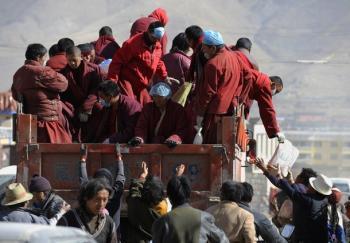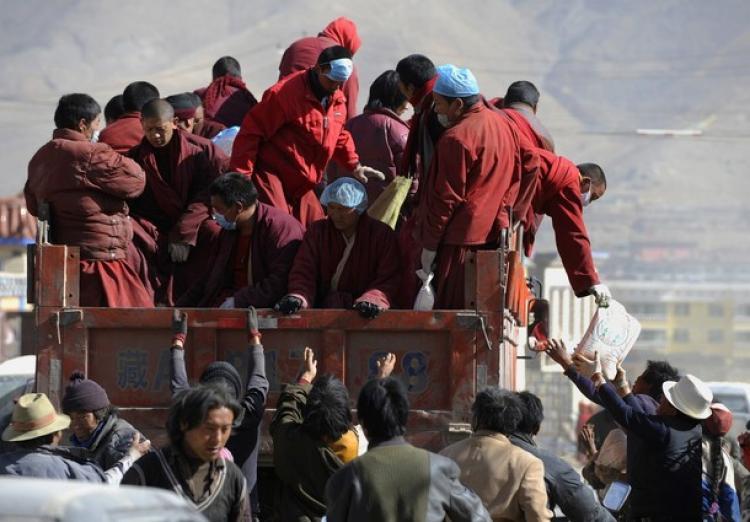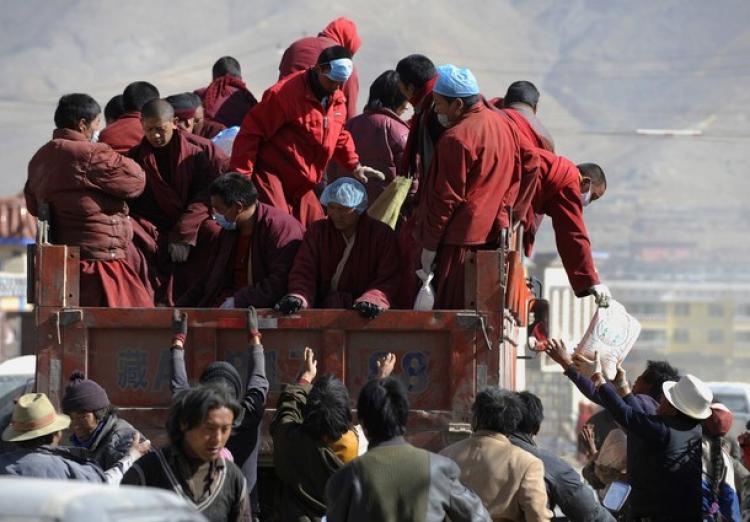Use of Earthquake Donations Causing Concerns in China
Questions about the handling of relief donations for quake victims are stirring debate in China.

Tibetan Buddhist monks distribute relief goods from a truck amid the earthquake devastation in Jiegu, Yushu county, in China's northwestern Qinghai Province on April 19. Getty Images
|Updated:



